One of my goals for 2018 was to make two pairs of Regency stays that worked on me: one for the 1790s, and one for the 1810s.
I did not achieve this goal.
I made The J.S Berhnhardt 1810s Stays, View C (and took them in and altered them so they have a better, if not great, fit), and another pair that I was equally unenthused about, but my year got rather taken over by settling in to teaching at Toi Whakaari, so personal sewing took a back seat.
I’m determined to get back on track with this goal in 2019, and so far I’m halfway there:
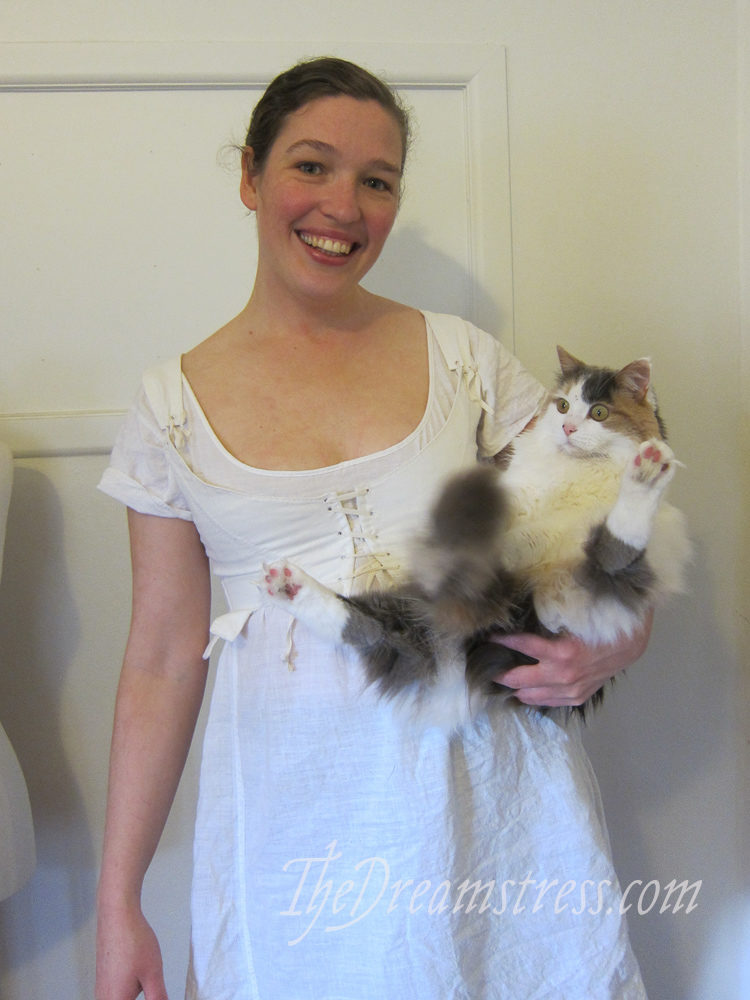
I have 1790s jumps that are super comfortable, give me lots of support, and actually create lift!
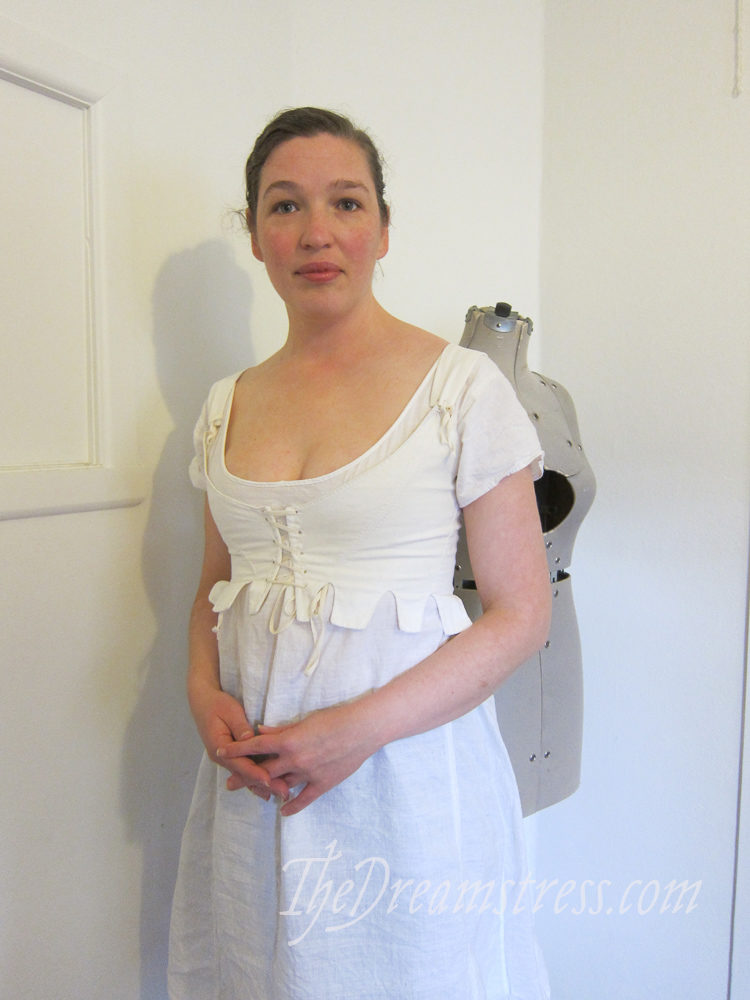
I used the 1790s jumps pattern given on pages 102-107 in Salen’s Corsets: Historical Patterns and Techniques.
The pattern as given in the book fits about a 40″ bust (and bigger if you want space in your front lacing)
I drew it out and graded it up and down last year for members of the Wellington historical sewers who owned the book, but weren’t the size given in the pattern. They have been sewing their own versions, so I’ve now seen it on a 46″ D cup, a 34″ DD, a 40 F cup, and a 38″ A cup – and it has worked pretty well on all of those.
So I had high hopes for my version, and so far I’m not disappointed. There is actual lift!
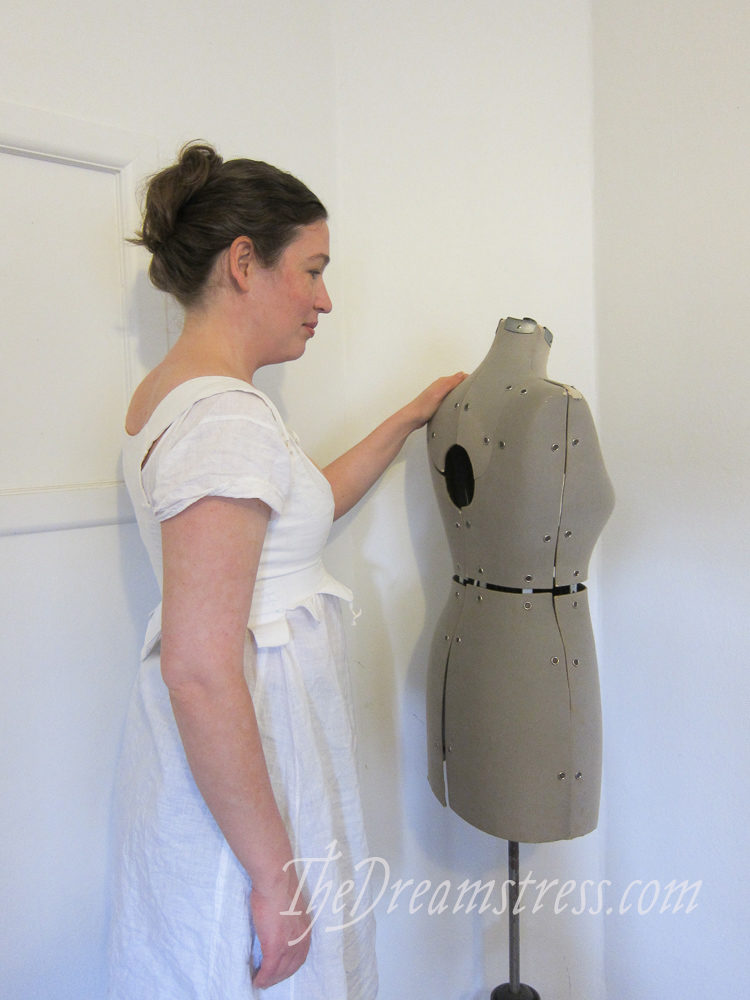
And they are comfortable!
I’ve yet to wear them under a dress, or for a really extended period of time, so that will be the final proof of success. But for now, I’m pretty delighted!
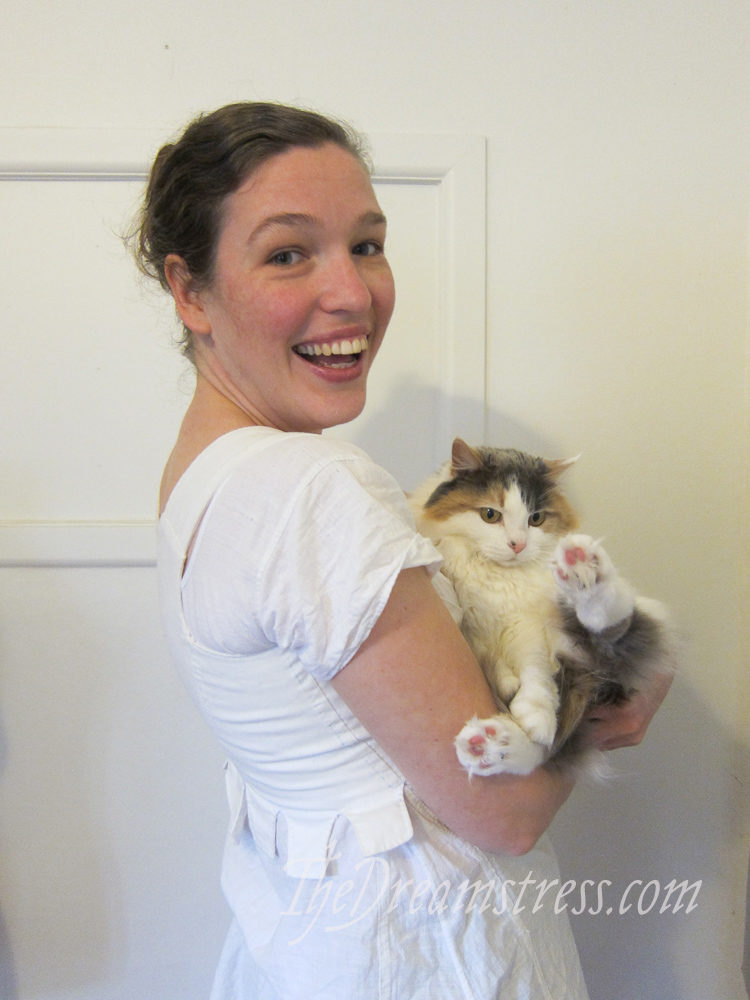
I generally used the construction methods given by Salen, although I’m not entirely convinced that they are how the originals were really put together. It works well enough though.
My jumps are made from a midweight linen-cotton blend. They are entirely hand-sewn, and have German plastic whalebone boning.
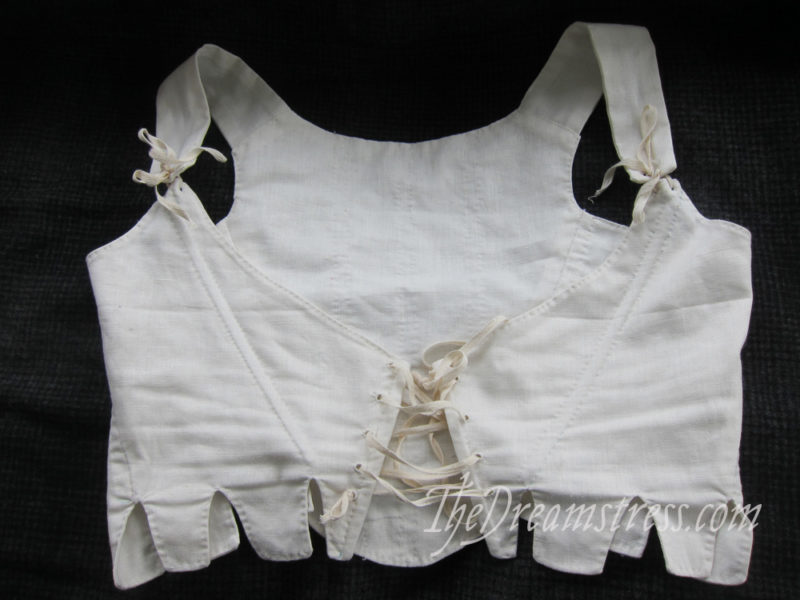
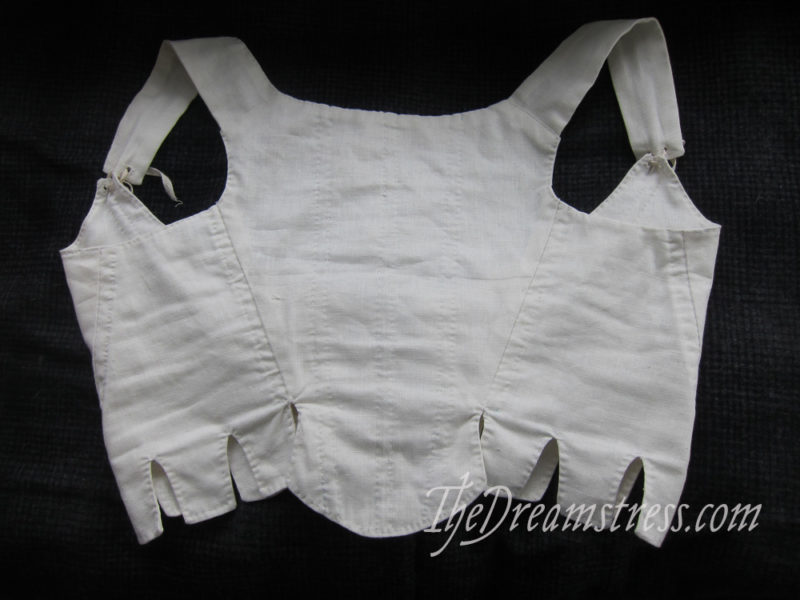
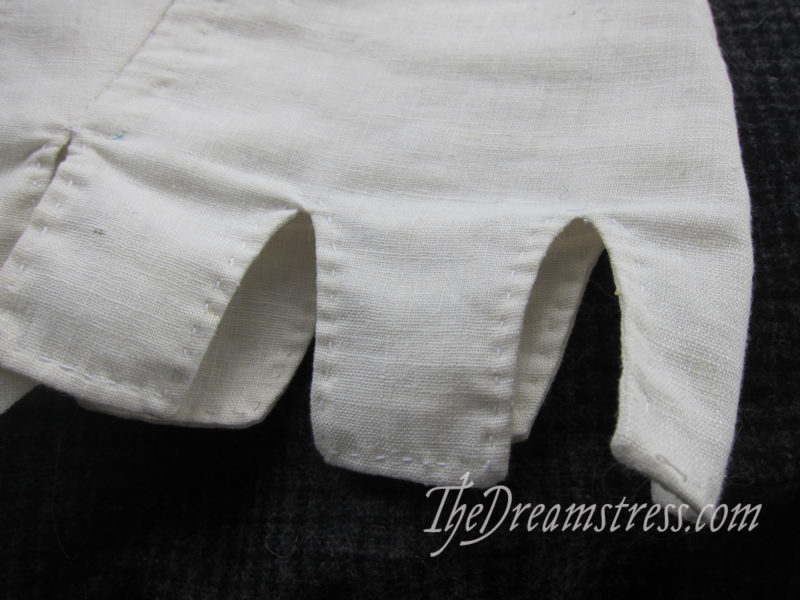
The overwhelming consensus from the Wellington sewers has been that you don’t want the back bones: even in the lightest fabric you might use, they aren’t needed, and they are just uncomfortable. Although I don’t plan to put them in, I sewed in my back boning channels, to hold the layers of fabric together, and just in case.
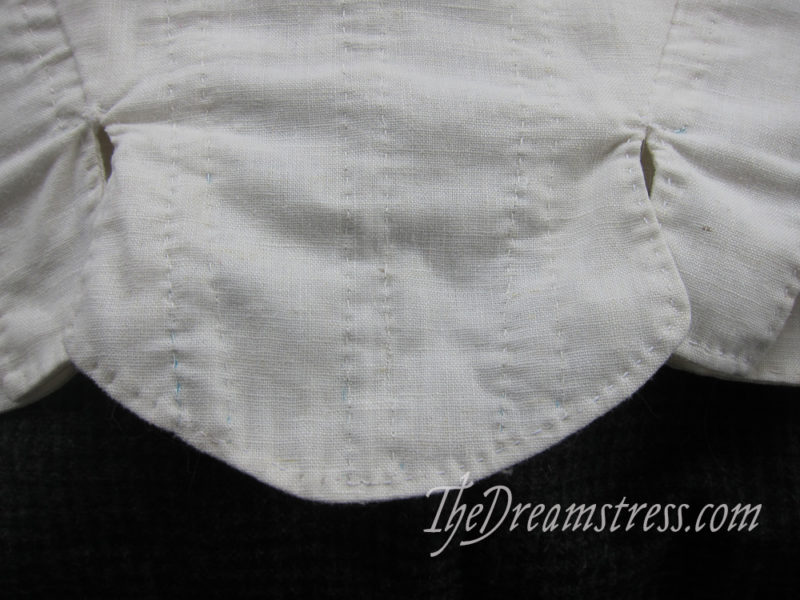
Those who made the jumps in heavier fabric found they didn’t need bones at all, but I find them really helpful in my lighter linen.
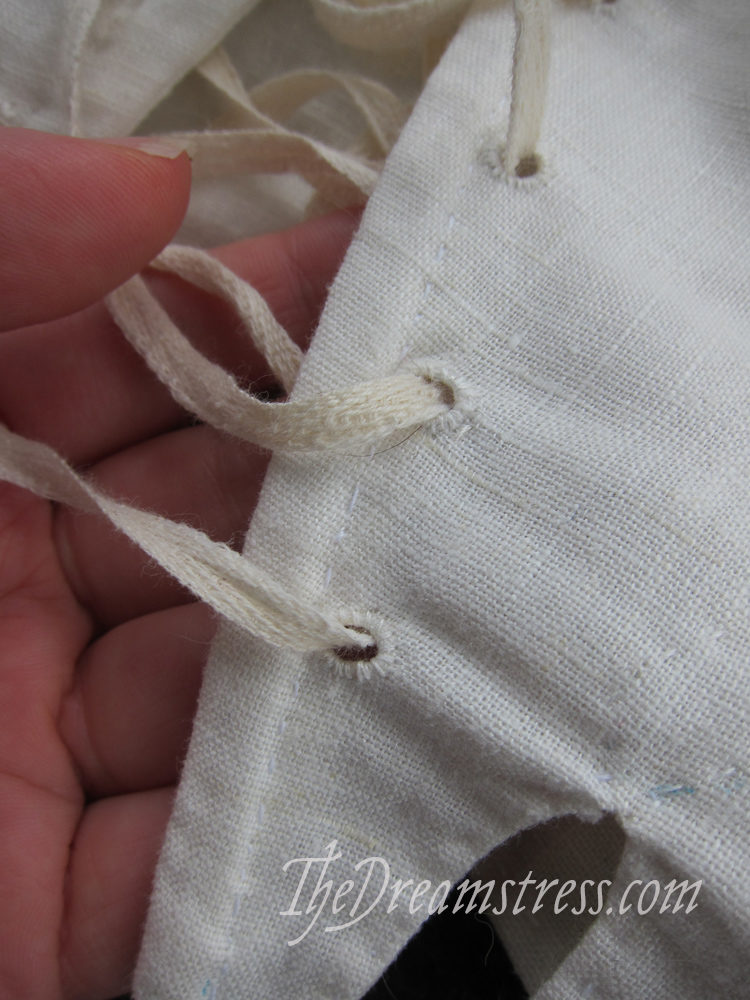
I have sewed my boning channels in a running backstitch, and may need to reinforce them with a full backstitch in the future.
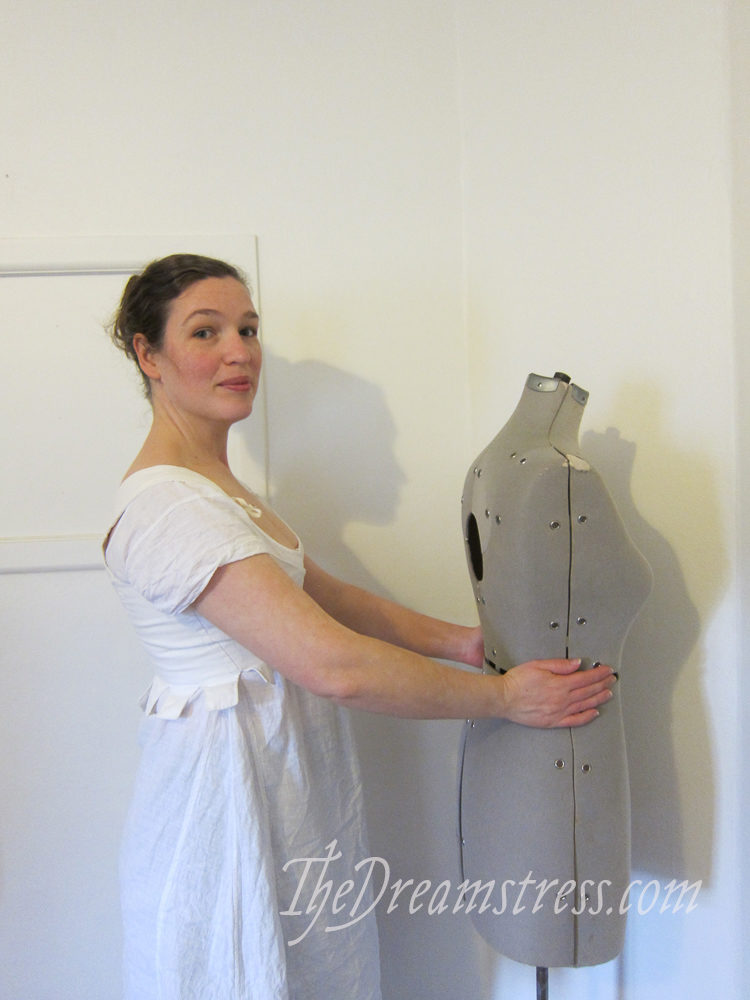
Even though this wasn’t a big or hard project, I’m counting it for the Historical Sew Monthly 2019 April challenge: Upping Your Game.
These are the culmination of a lot of practice and trial, and help me to fulfil a long held goal: that’s definitely upping my game. And they will up my Regency costuming game for sure! As well, I managed to make them during an incredibly difficult period, and I’m extremely proud of myself for that: sometimes your personal game level is much lower than usual, and you have to work with where you are.
And finally, the jumps literally ‘up’ me.
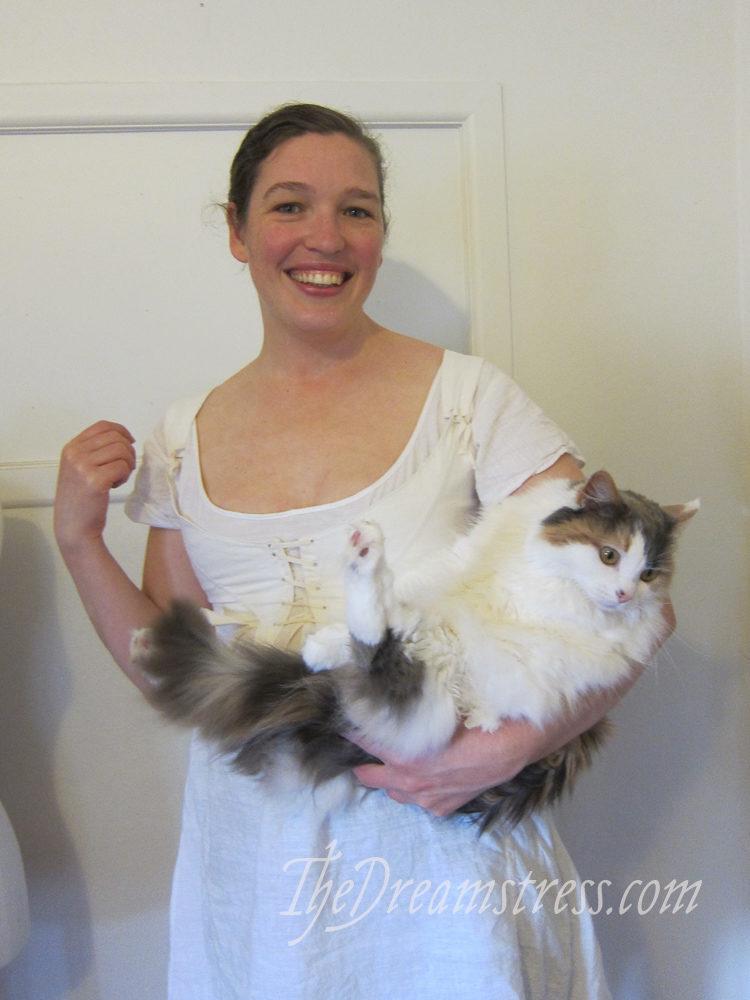
What the item is: 1790s jumps
Material: two layers of midweight cotton-linen
Pattern: 1790s jumps pattern given on pages 102-107 in Salen’s Corsets: Historical Patterns and Techniques.
Year: 1795-1805
Notions: synthetic whalebone, cotton thread, cotton lacing cord
How historically accurate is it? I followed the instructions in Salen’s Corsets exactly, but am not sure I 100% trust that they are accurate.
Hours to complete: 12 or so
First worn: For photos on June 8th
Total cost: $5 or so — the fabric was a piece I picked up for very little at an op shops, the only real expense was a bit of boning.
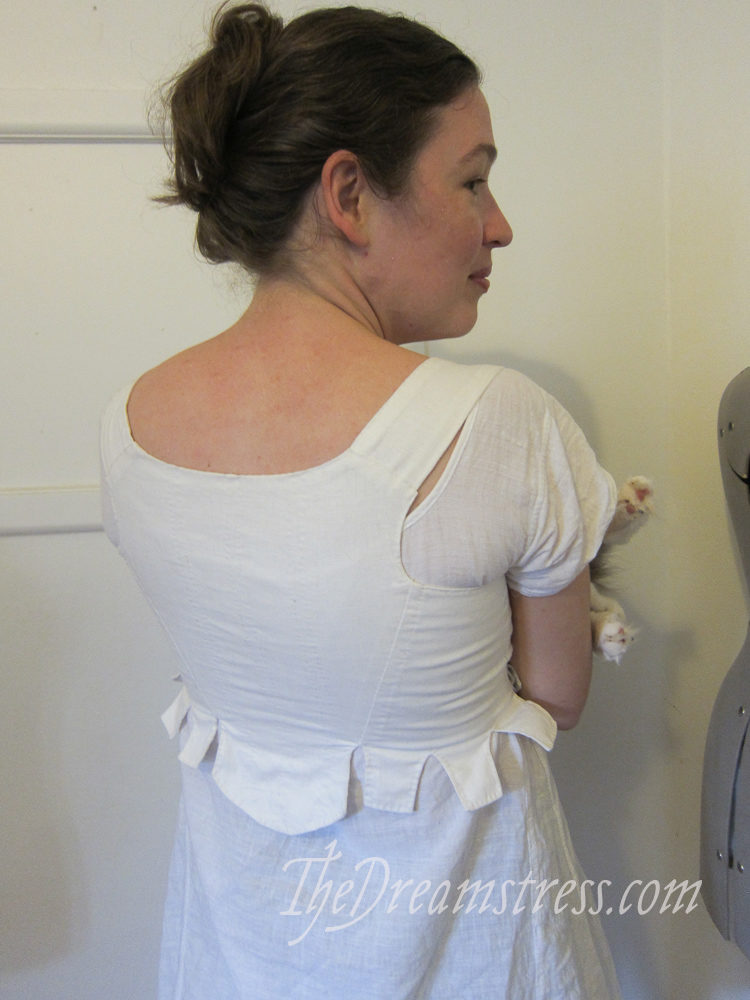

Thanks for the article, I always enjoy what you post. Glad to see close ups of the sewing too. Felicity was an added bonus
I enjoyed looking at this, it’s so good to be able to see the sewing close up too. And Felicity was a bonus
Thank you! Felicity definitely makes everything better, and she showed up just in time to be included in these photos 😉
I just finished mine from the same pattern. I didn’t hand sew them all but I might do another set. Yours are great
Well done! I can’t think of anything harder to sew than a piece of corsetry. Your stitches look wonderful. And only in 12 hours!
They look good! And shortish and transitional. Congratulations on unlocking an achievement. 🙂
Felicity goes extremely well with linen.
Looks great, and I love seeing Felicity. Does the person that sewed the 40F have a blog? I would love to see photos, I am the same size.
Thank you! Unfortunately Miss 40F doesn’t have a blog, and prefers not to be photographed as well, but I can assure you they look good on her, and provide a lot of support.
Wahoo! It always feels good to finally finish a goal.
Transitional periods (especially the end of the 18th century and the beginning of the 20th) have become one of my favorites. So looking forward to what comes next!
Such pretty stays, and the lines certainly do look comfortable. How neat that so many people made up the pattern. Felicity and her wee pink paw pads are adorable…
Congratulations on meeting a goal! The jumps look great. I’ve been thinking about making another pair (my 1st was one of my early sewing projects) and I think I will check out this pattern. And it is so good to see Miss Fiss again!
Jill salen- as you have made the pattern but think I may have the making up instructions wrong…I am very keen to know how you think they should be constructed?
Yours look lovely
Hi Jill,
Apologies for taking so long to answer this. You commented just as NZ went into lockdown, while I was frantically trying to convert an entire terms worth of class planning from classroom teaching to online teaching.
I didn’t say I think you have them wrong. I said I’m “not sure I 100% trust that they [the construction methods given in your book] are accurate” – which is not the same thing, nor does it imply that I know how they should be constructed.
My reservation is primarily because I don’t know of any other documented example for the the construction method you give (based on bagged out construction) for the jumps in late 18th/early 19th c stay/jump/corsetmaking. As a historian I was trained to treat anything that is significantly different from the commonly documented practice with caution – it may be entirely accurate, but without further examples or a significant discussion of why this garment shows a method that is somewhat unusual, it must be treated as likely, but not proven.
It’s obvious from the photos that the stays aren’t bound, but they could be constructed much more like the most common dressmaking techniques of the time, (outer built on lining) which could look much like a bagged out garment, but would require half as much stitching, and would be an easier way to create boning channels. So there is at least one other possibility of how they might have been made.
Where patterns from historical garments are accompanied by such detailed photos, and construction assertions are supported by multiple examples showing the same technique, then I feel confident that a technique is fully verified an accurate.
I understand there must have been significant word-count, layout, and image-use constraints in writing Corsets, which means you couldn’t show close ups of all the details, and couldn’t discuss all the possibilities of the garment.
It’s still an excellent resource, I recommend it to lots of people (it’s why almost all the historical sewers in Wellington have a copy of their own!), and it’s definitely something I accept as a viable reference in my students writings. Unfortunately the small amount of space you were able to devote to each garment means its not one where I trust any statement as completely verified – and since I can’t find another source with an example of the construction method you give for the jumps, I treat it as uncertain.
If you’re ever able to write a really detailed analysis of the jumps, or of that construction technique for jump making, as an article for Costume or one of the other academic costume journals that would be amazing!